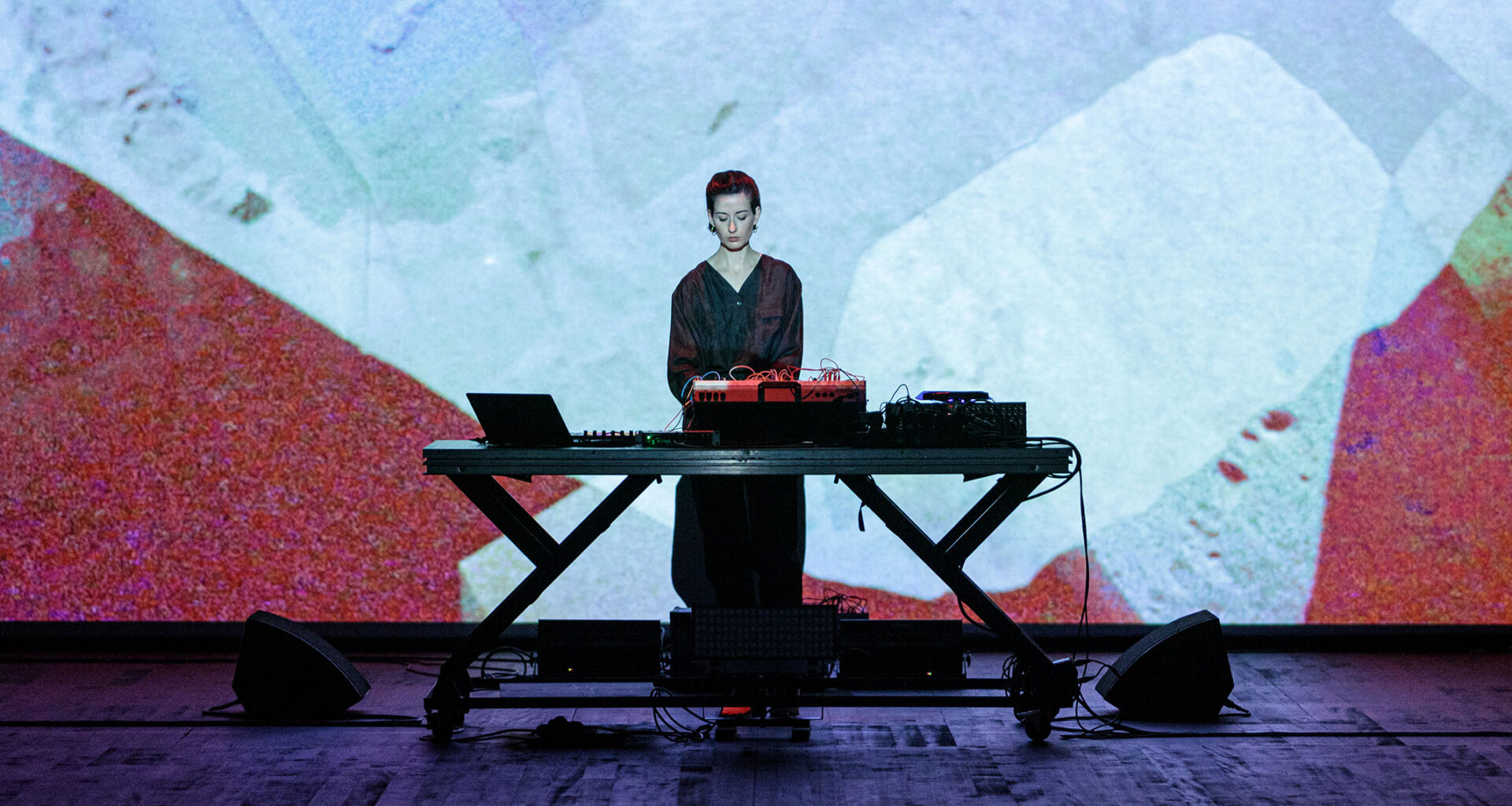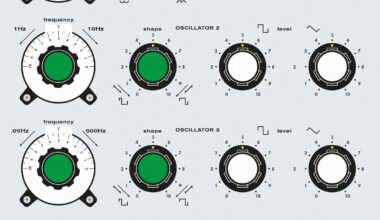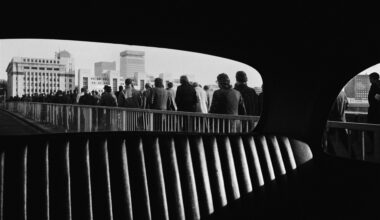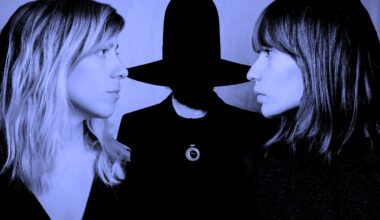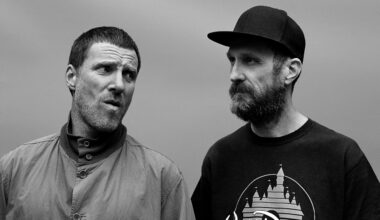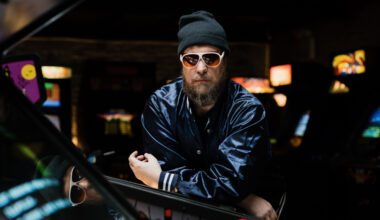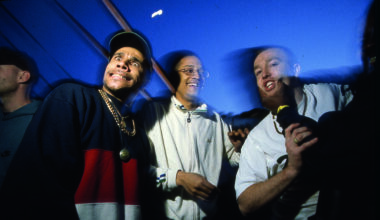Embracing modular synths, acoustic instrumentation and superb depth of expression, composer Maya Shenfeld’s sumptuous arrangements make for a hugely compelling listening experience
“As with many things in life, you go on an adventure and you don’t really think, ‘What’s going to happen?’.”
Composer Maya Shenfeld is recounting the artistic expedition she undertook in Portugal with her visual collaborator, the filmmaker Pedro Maia, to one of the world’s deepest marble quarries. Her eyes light up as she describes the dramatic setting, but there’s also a shakiness in her voice.
“We got to the site and Pedro said, ‘OK, shall we go?’, and I’m like, ‘What do you mean, go?’. When you look down, you get instantly dizzy. Imagine New York City skyscrapers, inverted downwards. There are all these super-steep ladders to climb up and down, and you’re pushing the boundaries of loss of horizon and vertigo – kind of flirting with freefall.”
It didn’t help that Portugal was in the grip of an extreme heatwave, with the landlocked mine in Vila Viçosa reaching temperatures of 45 degrees. But the two ventured into its unfathomable depths to capture imagery and sound that would feed into Shenfeld’s new album, ‘Under The Sun’.
“We quite literally explored the topic of being under the sun,” she says.
The album’s second track, ‘Tehom’, instantly transports you to Shenfeld’s adventurous destination. Industrial scrapes draped in expansive reverb cut through the tense silence, creating a palpable tension and a sense of vast space. It’s a forbidding listen, but an undeniably powerful one.
“The reverberation in the deepest quarry was very, very long,” explains Shenfeld. “It was really interesting to play with, but not too easy to record because it’s not a peaceful, passive, historical kind of place. It’s mostly the sound of digging and machines.”
The metallic rattle and chasmic decays could have set the tone for a full long-player of nerve-shredding atmospherics, but the pervading darkness of ‘Tehom’ is just one dimension of the sound Shenfeld explores. Other tracks, such as ‘A Guide For The Perplexed’ and ‘Geist’, are defined by richly melodic composition as much as moody sound design.
The concept of ‘Under The Sun’ was sparked by a book Shenfeld read at her family home in Jerusalem, where she grew up. Written by a family friend, it’s a modern secular interpretation of the book of Ecclesiastes from the Old Testament, which features the phrase “there is nothing new under the sun”.
“The book really blew my mind,” says Shenfeld. “It’s been a rough couple of years for humanity, to say the least, so it does make one ask, ‘What repeats as a pattern in the history of mankind, and how much agency do I have as an individual to impact that?’. I was thinking about the inability – or ability – to impact one’s own destiny and how to be a good, responsible human.
“I think through grasping this very difficult question, I want to believe that not everything repeats in a pattern, that every day something is changing, that there is something new under the sun. Also, as an image, the sun as a force of stability and threat was really strong for me,“ she nods with a grim understanding to the conflict unfolding in the region she was born in, as well as the challenges posed by climate change.
The sweltering heat at the site was a fitting backdrop to the theme she’d been contemplating when she first spoke with Maia, who also worked with Shenfeld on her debut album, ‘In Free Fall’. Their expedition came about after a conversation they’d had in Shenfeld’s adopted home of Berlin about a possible location in which to explore these themes creatively.
The quarry seemed fitting – the ancient impermeability of the stone versus the human drive for industrial-scale consumption, all crystallised under the intense glare of the sun, in a place where the breeze cannot even reach to offer relief.
When they entered the space, they took with them a range of drones and cameras to be able to capture the vast geometry of the space. Maia incorporated this footage into the visuals accompanying Shenfeld’s live shows for ‘Under The Sun’, which debuted at Sweden’s Intonal Festival in April 2023. That show and subsequent performances came before she had finalised the album.
“I wanted to have the experience of playing the music for people before locking it for release,” she explains. “I did that with ‘In Free Fall’ too, and I think it’s a really important part of the maturing of the piece.”
As well as gathering material for the live visuals, Maia and Shenfeld also used the quarry setting as a stage for the video to ‘Interstellar’, the lead single from ‘Under The Sun’. The sense of blistering heat is palpable in the stark light reflecting off the towering boulders and canyons, and is accentuated by the arid dust which clings to Shenfeld as she poses in situ and draws her own orbits. The Super 8-style treatment of the footage runs hot as well, as though the imaginary film might bubble and dissolve beneath the sun’s unrelenting glare.
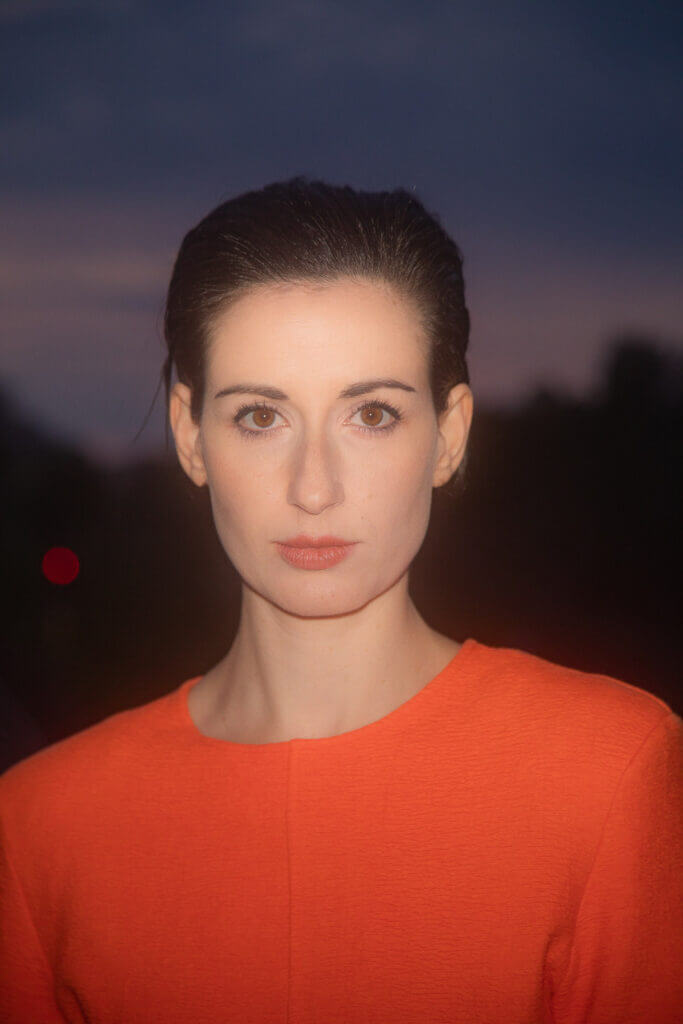
Sonically, ‘Interstellar’ isn’t as directly reflective of the quarry as the likes of ‘Tehom’. It’s a roundly melodic, synth-driven piece which speaks to Shenfeld’s path in music to date. Her roots lie in classical guitar, which she learned from a young age at a dedicated school in Jerusalem, growing up within the stricture of classical music and continuing her studies abroad. Looking to experience life elsewhere, she enrolled at Berlin’s Universität Der Künste (University of the Arts) and transferred from a performing arts undergraduate course to studying composition.
During this time, her curiosity had her questioning the limitations of the classical world, such as the inability to explore different disciplines. While studying, she found the time to compose and work on site-specific commissions, but she also forged connections in alternative music scenes, which encouraged her to spread her wings.
“I was feeling a little bit claustrophobic in this world,” she says. “I love classical music, but coming from that background and being in academia, I needed some time to explore and do other things. I joined a punk band for a couple of years and spent some time in India. Being in a band helped me realise that music is art, and anyone can make sound art. That could be at an academic level, but it could also be at a level that speaks to a local community, and both are equally valuable in terms of cultural contribution.”
The formal training hardwired into Shenfeld’s musical practice manifests in many ways on ‘Under The Sun’. It opens with the track, ‘A Guide For The Perplexed’, which unmistakably fulfils the role of an overture for the album. A brightly melodic arrangement for woodwind and synth that stretches out for seven minutes, it’s cast in sustained notes as a palate-cleanser, inviting the listener to slow down and prepare for the full experience of the album.
Contrasting so starkly with the clank and boom of follow-on track ‘Tehom’, it gives the impression of a cinematic experience which correlates with the work Shenfeld has done in soundtrack production. Thanks to the strident analogue arpeggio which propels it, ‘Interstellar’ feels more contemporary, though it’s firmly rooted in compositional theory and acts as a sister piece to ‘Body, Electric’ from ‘In Free Fall’. Both tracks are some of the most synth-focused in Shenfeld’s recorded repertoire, but they’re formally constructed.
“They are written in the form of a traditional romantic sonata,” she says. “When I was working on the first one, it was a challenge because it’s a bit mathematical, and there are specific sections and harmonic rules on how you move through these before the recapitulation of the themes.”
Shenfeld admits it’s difficult to shake off her formal training (“I can always push my boundaries more”), but as her two albums to date attest, the maturity of her work is a vital ingredient in what makes her take on neoclassical and ambient music so compelling. The experience of escaping into the free-form world of punk rock and experimental music has given her music a necessary edge, though. With a background in classical guitar, there was a lot for her to learn about tone and processing.
“At the time my friends invited me to jam, I was very much a beginner,” she admits. “I could play the fretboard, but I was new to electric guitars. So then I got acquainted with this whole world of nerding out about tube amps, pedals, and how it’s very important to get the right sound. Setting up a pedal board taught me a lot about electronic music. The minute I understood – you’re just sending a signal from point A to point B – the transition from pedal board to modular synth was easy.”
It’s modular synthesis that Shenfeld employs on most of the standout moments on ‘Under The Sun’, experimenting with different oscillators and merging them with the organ in St Matthäus-Kirche (St Matthew’s Church), Berlin, the solemn voices of the Ritter Youth Choir and the spread of other organic sound sources. Her challenge was in how to give her electronic elements the depth of expression she’s conditioned to expect from classical instrumentation. For ‘Interstellar’, it was a painstaking process to get just the right feeling from a synth sequence which is so prominent in, and indeed central to, the whole album.
“‘Interstellar’ is produced with woodwinds,” she explains. “So you hear an oboe, and my whole mission was getting the synth to breathe with that same feeling. You run the sequence through the machine, and it doesn’t feel like someone telling a story in the way a guitarist or violinist would. You get that by working on the envelope, basically. There are 120 versions of that track on my hard drive. It took me a long time to get it to the place I wanted.”
By way of contrast, ‘Geist’ was a “rare creature” that came together in one session. It’s a more patient arrangement than the movement and fine detail of ‘Interstellar’, but no less compelling in its teasing layers of drone, discord and texture. In Shenfeld’s work, the immediacy of punk-minded experimentation has an equal footing with the considered poise of more traditional composition, and sometimes the distinct disciplines quicken or slow the creative process in unexpected ways.
When she wrote and recorded ‘In Free Fall’, Shenfeld was keen to break away from her established practice in site-specific commissions which are ephemeral in nature. Creating more permanent work set in train a creative arc against which her music is now measured, at least for the outside listener.
“For ‘Under The Sun’, I intentionally wanted to expand on the language I’d developed for ‘In Free Fall’,” she says. “I have lots of other plans. The dream is to do an album locked in a studio for a weekend, playing all my instruments to see what comes out.”
She also pines for a return to the electric guitar work she first explored in bands. She hasn’t had much time to dedicate to it, apart from a recent commission for Berlin’s Heroines Of Sound festival, where she performed solo on a quadrophonic sound system. Whatever comes next, though, is sure to maintain the mix of deep knowledge and free-spirited curiosity that makes Maya Shenfeld’s work so compelling.
“The point is to stay open-minded enough to jam with people and see where music takes you,” she smiles.
‘Under The Sun’ is released by Thrill Jockey
